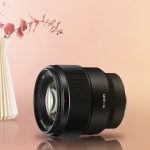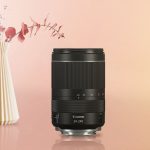
My photography language is the brand Canon because not even one product did disappoint me. Believe it or not, I had many of them, and success is guaranteed.
I get it, the struggle is real when it comes to lenses, even though I, as a professional, think twice while recommending anything, let alone those who are a beginner. Thankfully, you got me, and my explanations are straightforward and addressed to everyone who is curious to know more. Let’s get into STM and USM lenses.
Key Takeaways
- Both of these are autofocus lenses. STM is more prominent in size and is more expensive. USM lenses are smaller and usually come at affordable prices.
- STM lenses’ motor is silent whereas USM stepper motor is a bit noisy.
- For video shooting, STM lenses a preferable due to their silence, but USM works visibly faster.
- There are three types of USM and two types of STM lenses.
The Bloodbath Between STM & USM

Which One is Better?
First and foremost, the two of these lenses are autofocus, but they are built differently.
STM is usually bigger and pricier than USM lenses. The Stepper Motor means transforming the digital pulses to automatic rotation and is doing that in many baby steps.
USM, or in other words, ultrasonic motor, works with ultrasonic vibrations, and the same movement repeats itself. That’s pretty much how the focus ring works.
What About the Silence/Noise?
To differentiate, you must take STM and USM lenses with you. If annoyance could kill, I would be dead by now and if you’re that type of person, then abort purchasing USM lenses. The noise is quite normal and is created by the fast movement of the ring.
So if you want to create exciting videos, do yourself a favor and avoid the USM lenses.
STM lenses are my favorite because they are as quiet as I wish my camera could get. This is why if you intend to get a lens mainly for video shooting, then you already know which one to purchase.
It’s not a big deal if you take a picture or shoot videos; I would personally choose silence over noise and always recommend STM. However, that depends on your choice; if the noise in the video doesn’t disturb you, then go ahead and pick the USM lens. They both are excellent.
On the contrary, if you’re a photography freak and willingly want to spend money on a lens, then don’t miss out on USM. In my opinion, they offer more features because it better does, because I want to get what I pay for.
Which One is Pricier?
If money isn’t the problem for you, just skip this part. This part is for my tight-in-budget friends who check the price first and then decide about purchasing the product. In the end, we (including myself) are not Ariana Grande to say, ” I want it, I got it.
USM lenses are a lot more pricey than STM lenses, and a couple of reasons that stand behind it.
- Do you remember the ultrasonic motor that I mentioned previously? That is the top reason why USM lenses are way more expensive.
- Another reason is being way faster than STM lenses.
- Lastly, USM lenses are built for professionals because you can set up the autofocus manually. Only professionals get me. Yes, it may look a bit expensive, but once you put your hands on it, it’s over, mate. You won’t be able to go back to these mediocre performances anymore.
| Pick USM lens if you can “make it rain” and want high quality together with furious speed. On the side, pick STM for its compact, travel-friendly, lightweight features. STM lenses are my favorite pick when I shoot videos because they are hella silent and are on the budget side. |
Types of USM Lenses

Nano USM
As you may hear, the USM is the latest generation of ultrasonic motors that perform in extreme quality. They are known for their versatile use, for example, in wildlife, street, and action photography.
Nano presents more linear motion than rotation. That is exactly what they have in common with STM lenses. This system composes vibrations to the electrical current while moving the focused object.
Ring Kind USM
The ring type is considered as the Flash speed focusing. The precision that this type offers use electrical current to make vibration, so it can focus on the chosen object.
Micro USM
Micro USM cooperates with sonic vibration, which is mainly related to focus. It’s basically the same as a Ring type, but it’s more compact and small in size.
Types of STM lenses:
The silence is the best part of STM lenses, and I will keep choosing them for the price and fast-working construction. The STM lens has two features, and they are lead-screw type and gear type. Let’s have a detailed look at both.
The Lead-Screw-Type
This type is usually found in bigger lens types, as it is known to operate with the fastest autofocus in a silent way.
Gear-type
The second type is STM gear. These lenses tend to be more compact, and it cooperates with smaller lenses. It has the shape or form of a helix or, let’s say, spiral that works with the focusing ring.
Final Words
So which one is better is a tough question to answer. Well, as for the video, STM is ideal because it works silently, and there are no disturbing noises, so that does less work in the editing part. USM lenses, on the other side, are much more expensive and are preferred by professionals.
Hopefully, the article explains a lot. That was it for today.
Further Reading
Since this topic caught your attention, then you should definitely check out other articles related to the Speedlights for For Nikon D610.
To accompany your camera, you may want to check out the budget-priced tripods for just under $200. If the price still seems expensive, then you can check the tripods that are under $100 for DSLR and mirrorless cameras. Thank me later.

Wedding Photographer
From nature to urban landscapes, my camera is my tool for expressing my creativity and telling stories through my lens.



